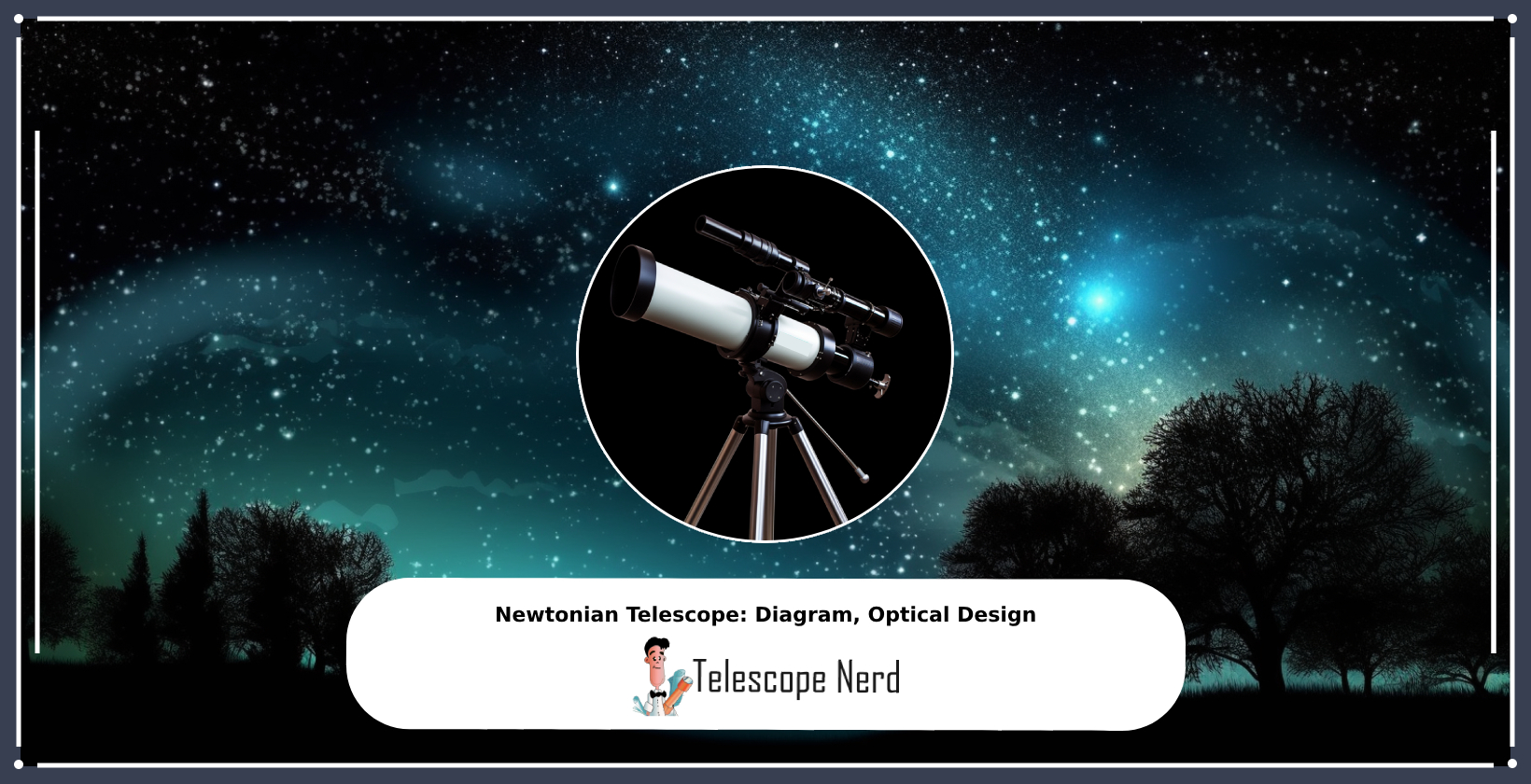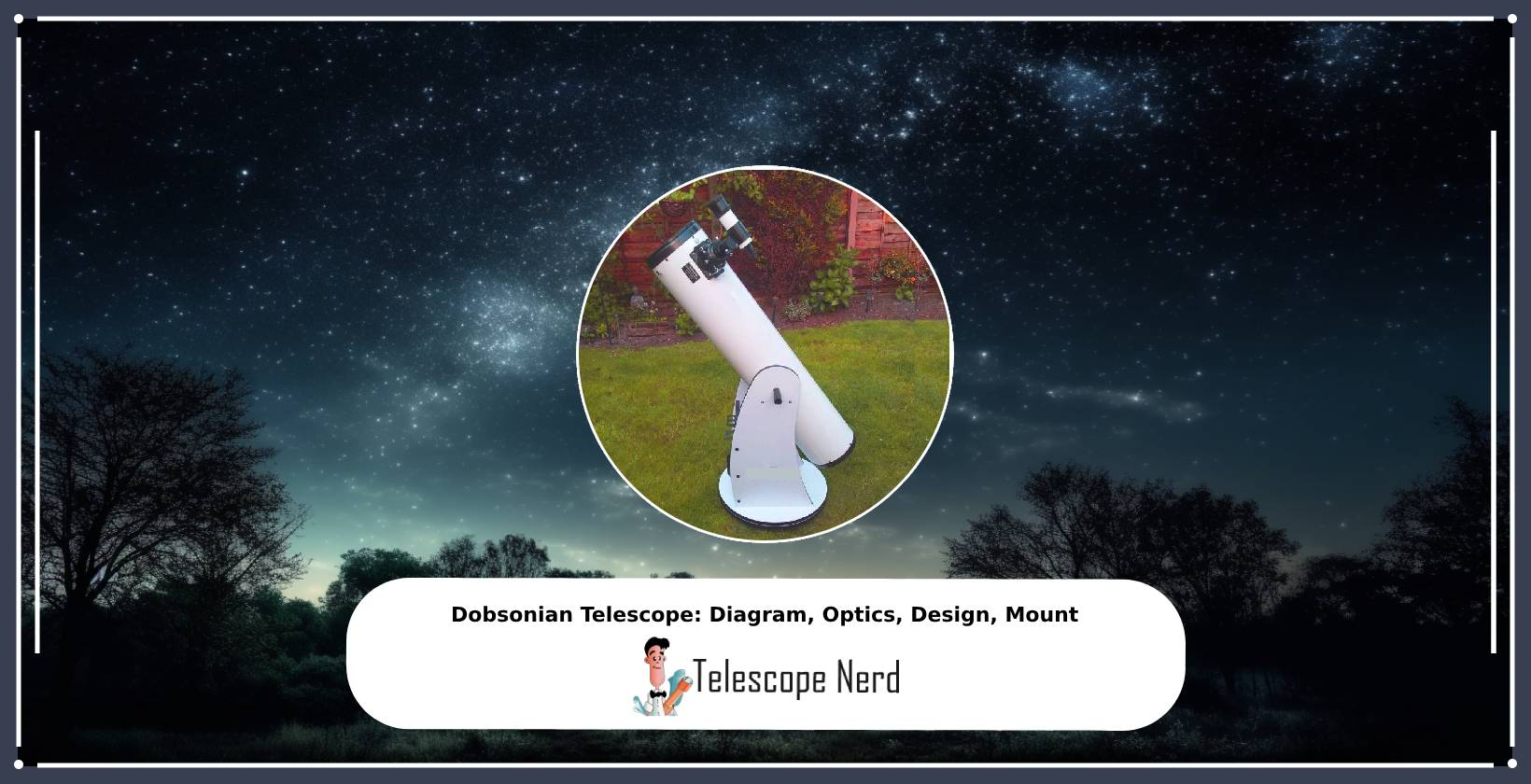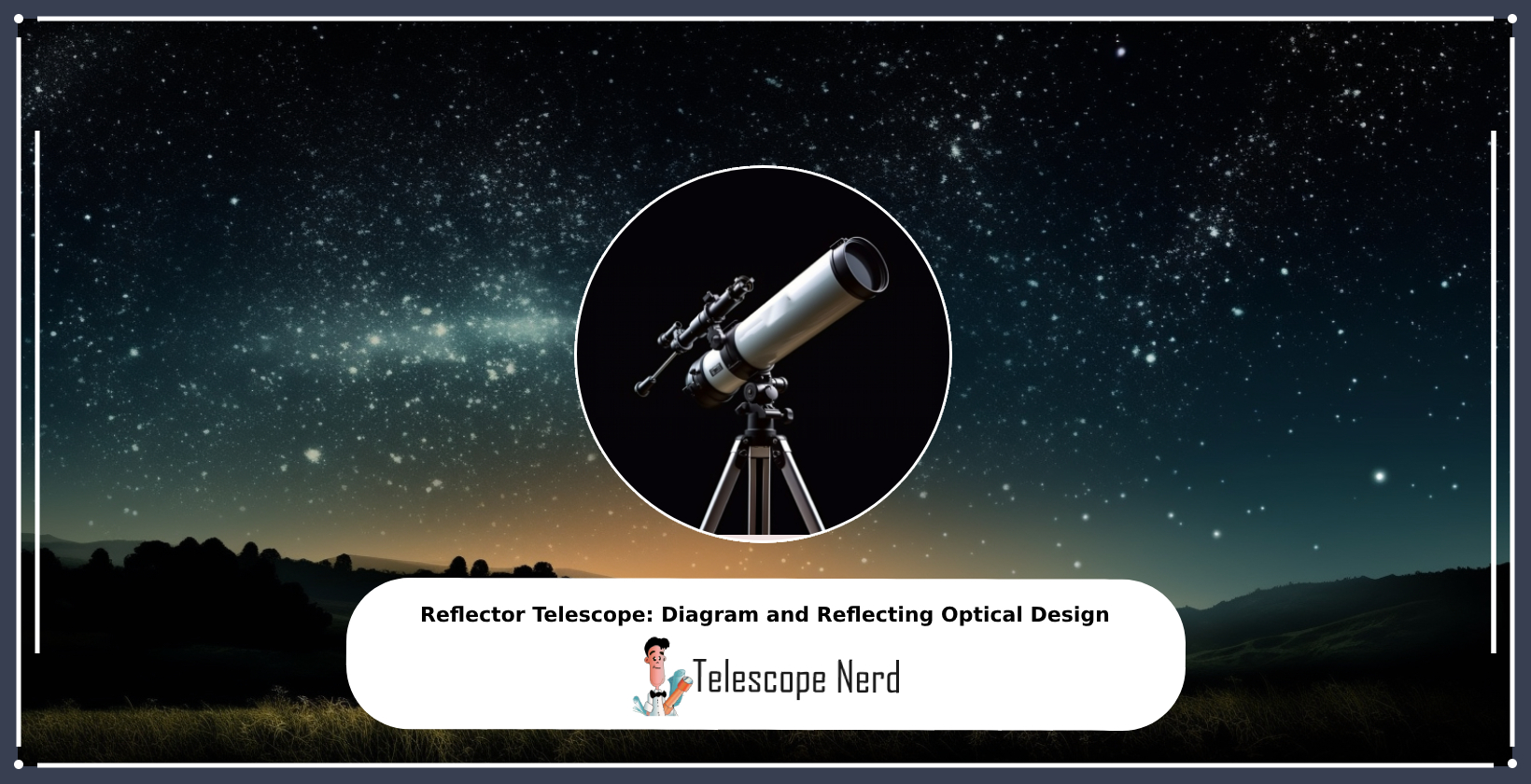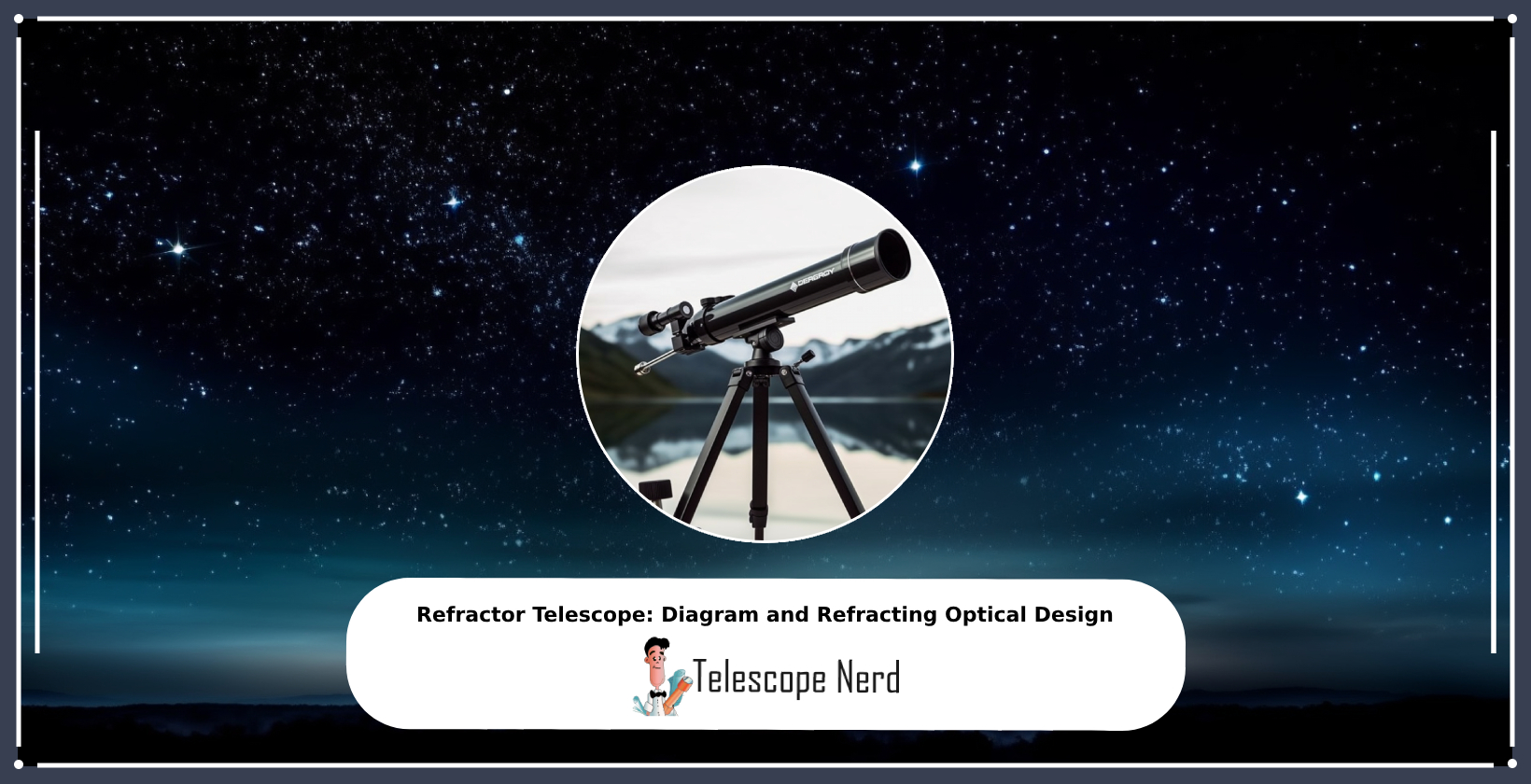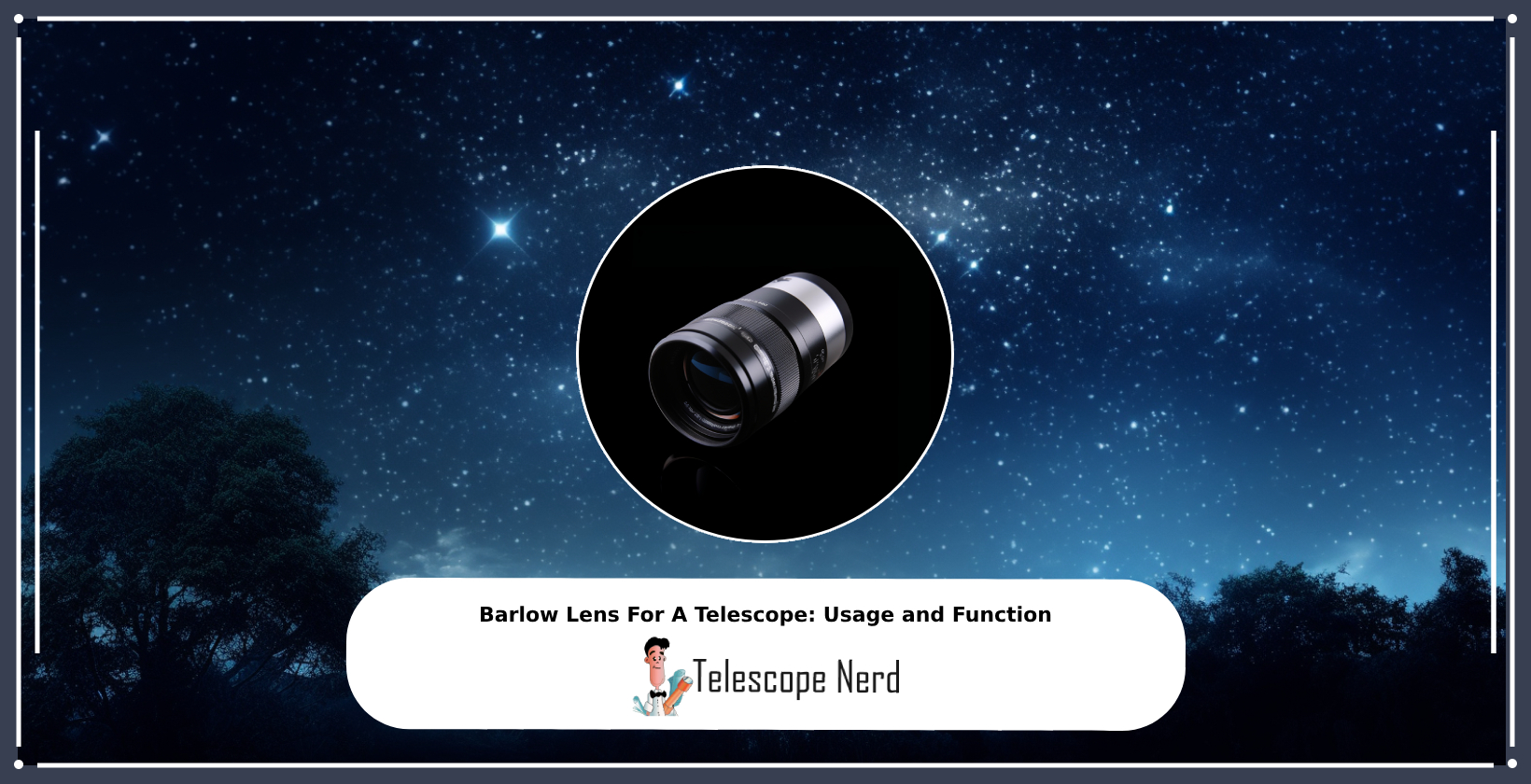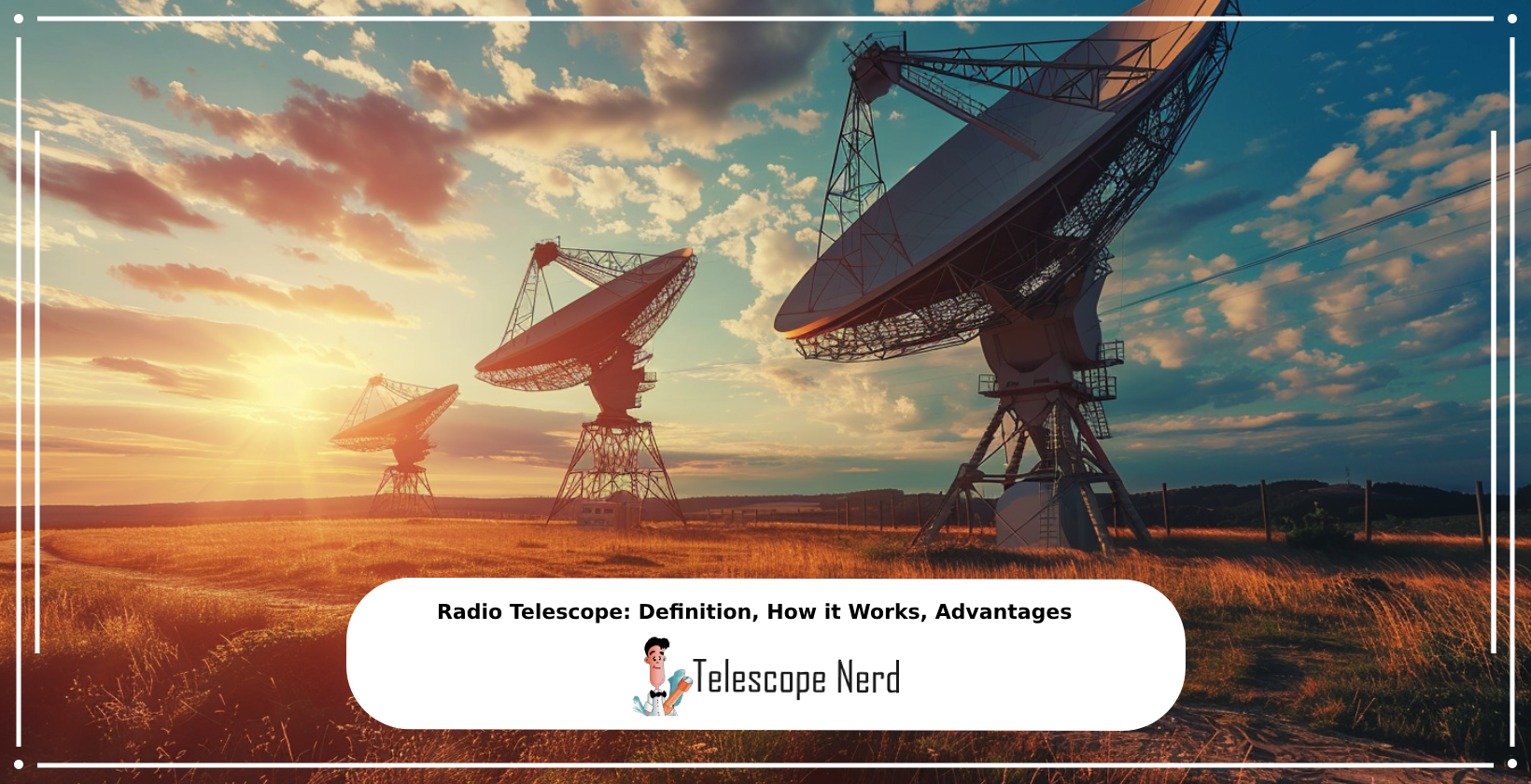Telescope: Best Models, Types, Brands, Parts, Function
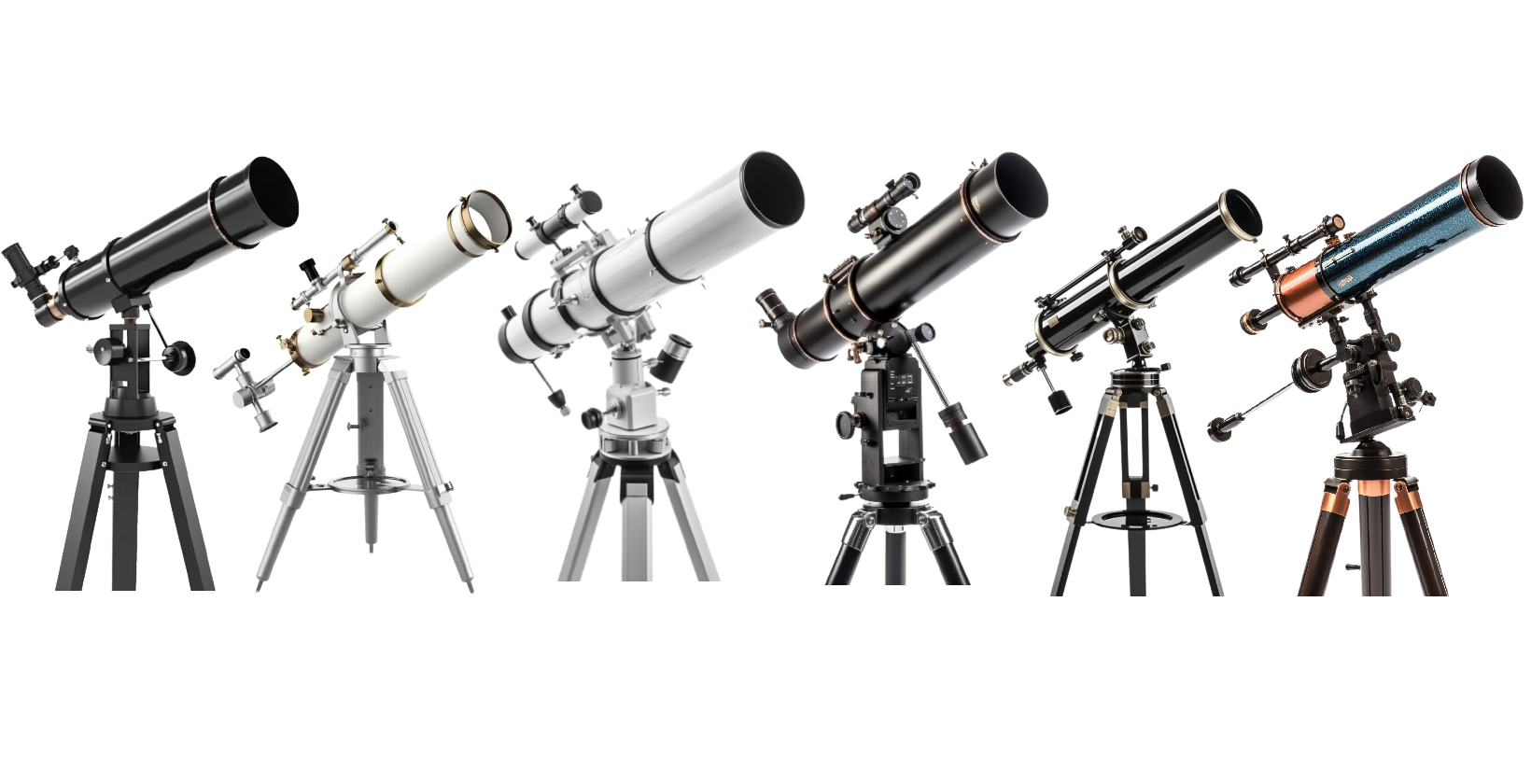
Telescopes are optical devices that magnify distant objects for observation. Knowing the type, brand, parts and function of a telescope allows astronomers to choose the optimal model for their observations.
It’s important to consider an individual’s goals, budget and preferences to choose the best telescope. Various types are available from a variety of brands, each providing its own benefits and drawbacks. These telescopes are categorized into refractors, reflectors, or compound telescopes. Each type is composed of distinct parts, such as the objective lens or mirror, eyepiece, and mount, which work together to magnify images of distant celestial objects.
Operating a telescope effectively requires a good understanding of its alignment, focusing and maintenance procedures. With a properly aligned telescope, astronomers are able to observe a vast array of celestial bodies ranging from nearby planets to distant galaxies. For individuals choosing a telescope, it’s vital to consider the intended purpose, personal budget and desired specifications to ensure the best observational experience.
What is a Telescope?
Telescope is an optical instrument that observes distant objects in the sky by collecting and focusing electromagnetic radiation, including visible light. Telescopes enable astronomers to study the universe in unprecedented detail, allowing observation of planets, distant galaxies, and stars. Refracting telescopes use lenses to bend and refract incoming light, while reflecting telescopes utilize mirrors to gather and focus light. Telescopes work by collecting light from distant objects and focusing it onto an eyepiece, which determines the magnification of the image. Larger telescopes collect more light and provide higher resolution, improving image quality and enabling important discoveries in astronomy such as exoplanets, dark matter, and dark energy.
Refracting telescopes use lenses to bend and focus incoming light. Reflecting telescopes employ curved mirrors to collect and concentrate light. Catadioptric telescopes combine lenses and mirrors for improved performance. Telescope magnification is determined by the ratio of focal lengths between the objective lens or mirror and the eyepiece. Typical magnifications range from 50x to 500x, depending on the telescope’s design and eyepiece selection.
Telescopes are essential tools for astronomical research and amateur stargazing. Astronomers use telescopes to study planets, stars, galaxies, and other celestial phenomena in detail. Telescopes enable various observational techniques, including visual observation, photometry, spectroscopy, and astrometry. Terrestrial applications of telescopes include wildlife observation, surveillance, and long-distance photography.
Telescopes have revolutionized our understanding of the universe. Space-based telescopes orbit above Earth’s atmosphere, allowing observation of wavelengths blocked by our planet’s atmospheric layers. Radio telescopes detect radio waves emitted by celestial objects, expanding our view of the cosmos beyond visible light. Telescopes have led to the discovery of new planets, stars, galaxies, dark energy, dark matter, and exoplanets.
What are the Best Telescopes?
The best telescopes are determined by ease of use, optical quality, type, specifications, and brand reputation.
Ease of use is a crucial metric for beginners and kids because the designs must be straightforward to set up and operate. These are often refractor telescopes or simple tabletop reflectors, as they require minimal assembly and adjustments.
The clarity and precision with which a telescope presents celestial objects hinge on its optical quality. A telescope with higher-quality optics will produce clearer and more detailed images, allowing astronomers to discern finer details on planets or capture fainter stars and galaxies. This quality is essential for both beginners and experienced users, as it directly impacts the viewing experience.
Refractor telescopes use lenses to deliver sharp and high-contrast views. Their closed-tube design also minimizes collimation, making it a common choice for beginners. Reflector telescopes utilize mirrors to gather light. Their design allows them to excel in capturing deep-sky objects like nebulae and galaxies. Compound telescopes combine the features of both, offering versatility in viewing a range of celestial objects.
A telescope’s specifications, such as aperture, focal length, field of view and magnification dictate the best telescopes. Aperture refers to the diameter of the telescope’s primary lens or mirror. Larger apertures collect more light, allowing viewers to see fainter objects. For those keen on observing planets in detail or faint galaxies, a telescope with a larger aperture is desirable. A telescope’s focal length influences its magnifying power. Telescopes with longer focal lengths produce higher magnifications, but the field of view becomes narrower. The right balance depends on what one wishes to observe. For observing planets, higher magnifications are beneficial.
Brands like Celestron, Orion, and Sky-Watcher have a reputation for producing the best telescopes. To choose the best telescope it’s important to consider the specific needs and interests, whether they’re a beginner, aiming to study planets, or purchasing for kids. It’s essential to balance these factors to find the most suitable option.
What are the Best Telescopes for Beginners?
The best telescopes for beginners are made by Tasco and Gskyer because they balance ease of use, cost-effectiveness, and performance. Beginners need telescopes that are straightforward to set up and operate. Complex alignment procedures or overly technical controls deter many newcomers. A user-friendly design with intuitive controls promotes a smoother entry into the world of stargazing. Telescopes that provide good value for money, offering clear images at a reasonable price point, are ideal for those just starting out. For beginners, a telescope should have decent optics that showcase the moon, planets, and some deep-sky objects in reasonable detail, fostering a deeper interest in the subject.
What are the Best Telescopes to See Planets?
The best telescopes to see planets are the Celestron NexStar and the Orion SkyQuest because they prioritize high magnification, clear optics, and stability. When observing planets, it’s crucial to have a telescope that magnifies distant objects without compromising clarity. A powerful magnification allows the intricate details of planets, such as the rings of Saturn or the bands on Jupiter, to become visible. High-quality optics, paired with a stable mount, prevent the telescope from shaking, ensuring a steady view of the planets. For planetary viewing, a telescope needs to merge powerful magnification with clear optics, anchored by a stable base, to provide the best possible experience.
What are the Best Telescopes for Kids?
The best telescopes for kids are the Meade Infinity and the Celestron FirstScope because they offer simplicity, durability, and affordability. For younger observers, a telescope needs to be easy to set up and use. Kids are more likely to enjoy and stick with astronomy if the learning curve isn’t steep. Telescopes for kids should also be able to withstand the occasional bump or drop, ensuring they last longer and provide consistent viewing. While new astronomers benefit from clarity and quality, parents often look for options that won’t break the bank, especially if the child’s interest wanes.
What are the Types of Telescopes?
The main telescope types are the refractor (refracting) telescope, reflector (reflecting) telescope, Dobsonian telescope, Newtonian telescope, and Schmidt-Cassegrain (SCT) telescope. Refracting telescopes use lenses to bend light, providing powerful, yet large, optics. Reflecting telescopes utilize mirrors to gather and reflect light, offering a more compact build. Dobsonian telescopes are a subtype of reflectors, prized for their ease of use and large apertures, making them common choices for beginners. Newtonian telescopes are another variant of reflectors with a parabolic primary mirror and a flat diagonal secondary mirror. The Schmidt-Cassegrain, or SCT, combines lenses and mirrors for a versatile design, making it suitable for various astronomical tasks.
Different telescope types exist to cater to varied astronomical needs and preferences. No single type of telescope is universally superior. The best choice depends on the user’s priorities, such as ease of maintenance, portability, and observational goals. Some types of telescopes, like the Dobsonian, are easier for beginners due to their intuitive design. The type of telescope will influence its price, with factors like materials, optical design, and brand. Refracting telescopes require less maintenance than reflecting ones because they don’t have mirrors that get misaligned. But regardless of type, each offers a unique observational experience, including ease of use, maintenance and performance.
What are the Most Common Types of Telescopes?
The most common types of telescopes are refracting, reflecting, and Dobsonian telescopes.
Refracting telescopes, also known as refractors, use lenses to bend light and bring it to a focal point. They are common due to their simplicity in design and ease of use. Refractors offer sharp images and require minimal maintenance since their optical elements are sealed from the elements.
Reflecting telescopes, or reflectors, utilize mirrors to collect and focus light. They are popular because they provide a larger aperture at a lower cost than refractors, making them ideal for viewing fainter celestial objects like nebulae and galaxies.
Dobsonian telescopes are a type of reflecting telescope mounted on a simple yet stable altazimuth base. Their straightforward design, combined with a larger aperture, makes them a favorite among amateur astronomers for deep-sky observations. Dobsonians are especially appreciated for their ease of use and affordability.
What Telescope Types are Easiest to Use?
The easiest telescopes to use are Dobsonian and refracting telescopes.
Dobsonian telescopes are favored by many novices due to their simple and intuitive design. Mounted on an altazimuth base, these telescopes are straightforward to point and navigate across the sky. The absence of complicated alignment processes or electronic setups makes them a hassle-free choice. Additionally, their larger aperture means beginners are able to observe a broad range of celestial objects with clarity.
Refracting telescopes, on the other hand, come with the advantage of minimal maintenance. Their sealed optics prevent dust or debris from entering, and there’s no need for regular mirror alignments. These telescopes provide clear, sharp images, especially of brighter objects like the moon and planets. The user-friendly nature of refractors makes them a popular pick among those new to astronomy.
Dobsonian and refracting telescopes stand out as the most beginner-friendly options due to their ease of setup, operation, and minimal maintenance needs.
What Telescope Type Requires Minimum Maintenance?
Refractor is a telescope type that requires the least maintenance due to the design simplicity, stable alignment, and durability.
Refractor telescopes use a simple configuration of lenses, in a sealed tube, to gather and focus light. This sealed tube design prevents dust and air from contaminating the optics, ensuring that cleaning and realignment are needed less frequently.
Unlike reflector telescopes, which use mirrors and require collimation, the optics of refractor telescopes tend to stay aligned over time. This means less frequent adjustments for the user.
The solid construction of refractor telescopes often makes them more reliable and less susceptible to misalignments due to bumps or accidental drops.
What Are the Biggest Telescope Brands?
The 9 biggest telescope brands are listed below.
- Celestron
- Orion
- Meade
- Bushnell
- Tasco
- Gskyer
- Vivitar
- Sky-Watcher
- Zhumell
Celestron is an American manufacturer revered for its computerized (GoTo) telescopes and diverse optical equipment range.
Orion, another American staple, spans a spectrum of offerings, known for user-friendly products tailored for both novices and adept astronomers.
Meade, rooted in America, specializes in catering to amateur astronomers, with a penchant for innovative computerized telescope designs and advanced optics.
Bushnell, while predominantly recognized for binoculars and other sporting optics, extends its American brand to provide general consumers with affordable telescopes.
Focusing on cost-effectiveness, Tasco, another American brand, predominantly produces entry-level telescopes.
Gskyer is recognized for beginner-friendly telescopes, emphasizing portability and simplicity.
Vivitar, although primarily acclaimed for cameras and optical devices, ventures into the telescope realm with products aimed at amateur enthusiasts.
Sky-Watcher stands out with offerings suitable for both beginners and advanced users, gaining particular praise for their Dobsonian telescopes and refined optics.
Zhumell is dedicated to crafting high-quality Dobsonian telescopes, specifically designed to enhance deep-sky viewing experiences with larger apertures.
These brands offer a range of products, from computerized to Dobsonian models, catering to various user levels. The focus of these companies ranges from advanced optics and computerized designs to portability and affordability. Several telescope brands, including Celestron and Orion originate from America but outsource manufacturing overseas.
What are the American Telescope Brands?
The primary American telescope brands are Celestron, Orion, Meade, Bushnell, and Tasco.
Celestron, established in Torrance, California in 1960, has emerged as a global leader, notably for its advanced computerized (GoTo) telescopes tailored to various levels of astronomy enthusiasts.
Orion Telescopes & Binoculars, based in Santa Cruz, California, has been operating since 1975. They are renowned for their user-friendly products packed with high-quality optics, serving both beginners and experts.
Meade Instruments, initiated in 1972, stands out with its dedication to amateur astronomers, offering advanced optics and pioneering computerized telescope designs.
Bushnell, a brand that began its journey in 1948, has a rich legacy in optics. While they are predominantly celebrated for binoculars and sporting optics, they have diversified their line-up to include affordable telescopes for the general public.
Tasco has been in operation since 1954 and focuses on furnishing the market with reliable entry-level telescopes, making stargazing accessible to novices. While there are many other telescope companies based in America, these five have developed long-standing reputations for high-quality telescopes in the United States.
Does the Telescope brand affect the quality of optics?
Yes, the brand of a telescope affects the quality of its optics. The quality of optics is an indicator of its ability to produce clear, sharp, and accurate images of celestial bodies. Different brands will utilize different materials and manufacturing processes, resulting in varying optical quality. Quality is a measure of how well the optics capture, focus, and transmit light without introducing aberrations or losing clarity.
High-quality optics will deliver images with detailed precision, true colors, and minimal distortions, while telescopes with inferior optics produce blurred or distorted images. Reputable brands often use high-grade glass and coatings to enhance light transmission and reduce unwanted reflections, influencing the quality of the images. Established brands also tend to invest heavily in research and development, leading to improvements in parts, design and functionality.
What Parts Does Telescope Have?
A telescope has five primary parts, each serving a unique function. These components include the optics, mount, eyepiece, optical tube, and accessories.
Depending on the type of telescope, the optics are a lens (in refractors) or a mirror (in reflectors). These optics are made from high-grade glass or other low expansion materials like Pyrex. The primary mirror or objective lens gathers and focuses light to create an image. The quality and maintenance of these optics play a pivotal role in determining the clarity and sharpness of the image produced.
The mount is the supportive framework that holds the telescope in place. Two main types of mounts are altazimuth and equatorial. Altazimuth moves side to side and up and down. Equatorial aligns with the Earth’s axis and tracks the motion of celestial bodies. These mounts are often made of sturdy metals to ensure stability.
The eyepiece is essentially the magnifying glass through which the image is created by the primary optics. Eyepieces come in various magnifications and are interchangeable. They are constructed using a combination of glass lenses housed in a metal or plastic casing.
The optical tube assembly is the cylindrical structure that houses the primary optics and provides protection from dust, debris, and stray light. Optical tubes are made from a range of materials, from metal to high-quality plastics, depending on the brand and model.
To aid in locating objects in the sky, telescopes are equipped with accessories. These accessories include filters, finderscopes and focusers. Filters, made from glass or acrylic, modify light as it enters the telescope to increase contrast and clarity. Finderscopes assist in locating images and focusers adjust the sharpness. Both finderscopes and focusers are made of a combination of metals, glass and plastics.
Each of these parts contributes to the performance and functionality of a telescope and the quality of observations.
How Many Parts Does a Telescope Have?
Telescopes have over 100 parts when accounting for components such as tube rings, dew shields, screws, and other minutiae. However, there are 8 notable parts that allow telescopes to function effectively. These parts include lenses, mirrors, mounts, eyepieces, optical tubes, filters, finderscopes and focusers.
As advancements are made in the field of astronomy, new accessories and devices are designed to improve the functionality of a telescope. To take advantage of the innovations and optimize the performance of the telescope, it becomes necessary to replace or upgrade components.
Are parts Replaceable in a telescope?
Yes, most parts in a telescope are replaceable. However, certain integral parts of specific telescope models, especially those fused or uniquely crafted, are not easily replaceable or require specialized tools and expertise to change. These components include mirrors, lenses and optical tubes.
Is it Possible to Upgrade Parts of a Telescope?
Yes, it is possible to upgrade parts of a telescope. Eyepieces, for example, are often swapped for those with better magnification or field of view. Mounts are also frequently upgraded to motorized versions for smoother tracking of celestial objects. Furthermore, mirrors or lenses are able to be replaced with those of higher quality or specifications, but this is generally a more difficult task. It’s essential to ensure that the upgraded parts are compatible with the existing telescope model. Compatibility is necessary for a telescope to work properly.
How Does a Telescope Work?
Telescopes work by gathering and magnifying light from distant objects to produce a clear image. In the process of collecting light, the aperture, which is the diameter of the main optical component, plays a pivotal role. In refractors, the main optical component is a lens, while in reflectors, it’s a mirror. A larger aperture allows the telescope to capture more light, making fainter objects visible and providing clearer images of distant celestial bodies.
After the light is collected, it is directed toward a focal point. The distance from the lens or mirror to this focal point is termed the focal length. The focal ratio, represented as an “f-number,” is the ratio of the telescope’s focal length to its aperture. The focal ratio affects the field of view and the brightness of the image.
To form an image, a telescope focuses the collected light, converging it using either lenses in refractors or mirrors in reflectors. The resulting image is then magnified using eyepieces, which come in various magnifications.
The clarity and quality of the image formed are influenced by several factors. The precision in manufacturing the lenses or mirrors, the quality of the materials, and the telescope’s design all impact the resulting image. Moreover, external factors like atmospheric conditions and light pollution also affect performance.
Many traditional telescopes function solely on optical principles, meaning they don’t rely on electricity. However, modern computerized telescopes often incorporate electronic components to track objects, adjust settings, or even take digital images.
Does a Telescope Require Electricity to Work?
No, a telescope does not require electricity to work. Traditional telescopes operate based on the principles of optics, using lenses or mirrors to gather, focus, and magnify light.
However, many modern telescopes come with additional features that do need electricity. These include computerized tracking systems, motorized mounts, built-in cameras, or heaters to prevent dew formation on the optics. These features require a power source, batteries or external power supplies. While these features enhance the telescope’s functionality and user experience, the basic operation of collecting and magnifying light remains passive and does not necessitate electrical power.
How to Use a Telescope?
To use a telescope, observers must mount, align, locate, focus and observe celestial objects. Knowing how to use a telescope properly is key to optimizing one’s observational experience.
Before observing, set up the telescope on a stable surface, ensuring the entire structure is level. The optical tube, which is central to the telescope’s function, must be securely attached to the mount. For those utilizing an equatorial mount, its polar axis needs alignment with the North Star if one is in the Northern Hemisphere, or with the South Celestial Pole in the Southern Hemisphere.
Once the setup is complete, the telescope should be aimed at a celestial object of interest. Beginners often find it easiest to start with prominent objects, such as the moon or the planets Jupiter and Saturn. The focus should be adjusted until the image is clear.
The method of locating objects differs depending on the type of telescope. Telescopes equipped with a GoTo mount have computerized systems that, once set up, automatically locate and track celestial objects. This automation significantly shortens the time it takes to find an object.
However, regardless of the type, it’s essential to exercise caution when observing. For instance, one should never point a telescope directly at the sun without a specialized solar filter, as this causes permanent eye damage. Observing during the day has its challenges due to the brightness of the sky, but with the right equipment, such as solar filters, it’s possible and safe.
For beginners, the process will take longer initially, as there’s a learning curve associated with understanding the telescope’s parts and their functions. With experience, the process becomes more streamlined, taking just a few minutes.
How to Use a Telescope to Look at the Sun?
To safely observe the sun with a telescope, it’s imperative to use a dedicated solar filter. This filter should be fitted over the front of the telescope, significantly dimming the sunlight before it enters the optics.
The solar filter must be specifically designed for telescopic use and should cover the entire aperture of the telescope. It’s essential to inspect the filter before every use, checking for any scratches, pinholes, or imperfections. Even a small defect lets through harmful amounts of sunlight.
When setting up the telescope for solar observation, do not use a finderscope unless it is also equipped with a proper solar filter. An alternative is to use the telescope’s shadow to help align with the sun. When the shadow of the telescope on the ground is smallest, the telescope is pointed directly at the sun. Once the telescope is aligned, and with the solar filter securely in place, one is able to view the sun safely. Observers will witness sunspots, solar flares, and other solar phenomena.
Is it Difficult to Use a Telescope as a Beginner?
No, it is not difficult to use a telescope as a beginner if the observer utilizes simple telescope types and intuitive accessories. Refractor telescopes are recommended for novices due to their ease of use and low maintenance. Refracting telescopes consist of a lens at the front, which directs light to the eyepiece at the back. This design allows for straightforward observation. Conversely, reflector telescopes use mirrors to gather and focus light. Due to the use of mirrors, the telescope requires periodic realignments, adding a layer of complexity.
Other accessories and devices will also add difficulty to telescope use. For example, GoTo mounts, featured in some telescopes, auto-locate celestial objects. While this automation makes observations easier, setting up and calibrating such a system initially demands more time and understanding. The initial setup will take a couple of minutes for a beginner working with a basic refractor telescope. As one becomes familiar with the telescope’s functionality, this duration decreases.
Is it Possible to Use a Telescope During the Day?
Yes, it is possible to use telescopes during the day, but they are not as effective as they are at night. This is because the bright light from the sun overpowers the light from celestial objects, reducing the contrast. This reduced contrast makes it difficult to use telescopes during the day. However, with the right filters and precautions, telescopes are able to be used for solar observations or viewing bright planets like Venus.
What Can You See With a Telescope?
With a telescope, observers can see planets, stars, galaxies, nebulae, and even certain astronomical events like meteor showers or solar eclipses. The clarity and range of the observations largely depend on the location, weather, pollution, experience, type of telescope and its specifications.
The area where the telescope is set up also plays a significant role. For instance, if observing in a location with a lot of light pollution, such as a city, it will be challenging to view faint celestial bodies. On the other hand, a dark countryside will offer much clearer and more detailed views. Weather conditions, especially cloud cover, also influence what will be observed. A cloudy night will obscure the view, limiting what is seen.
The type of telescope and its specifications, like aperture size, also determine what will be seen. A larger aperture gathers more light, allowing the user to see fainter objects that a smaller aperture will not reveal. Moreover, the type of telescope – be it a refractor, reflector, or compound – will influence the clarity and type of images produced.
Additionally, the experience and knowledge of the person using the telescope will affect the observations. An experienced astronomer will be able to identify and focus on celestial objects that a beginner would overlook. Similarly, using a telescope with a larger lens or higher magnification eyepiece brings distant objects into clearer focus.
How Far Can a Telescope See?
Telescopes can see from 10 miles to billions of lightyears, depending on the aperture, type, and quality of its optics. In general, the larger the aperture, the further and clearer it is able to observe distant celestial objects.
For instance, an 8-inch telescope is able to observe objects about 2 billion light years away under optimal conditions. However, this doesn’t mean an observer will see galaxies at this distance with the same clarity as closer objects. Rather, at such distances, galaxies appear as faint smudges or points of light.
The type of telescope also factors into its viewing distance. Refractors, which use lenses, tend to have clearer images but generally do not see as far as reflectors of the same size that use mirrors. Compound or catadioptric telescopes combine both lenses and mirrors.
The magnification of a telescope, which is determined by its focal length and the eyepiece used, plays a role in how well distant objects are observed. But it’s essential to note that magnification is not the sole determinant of how far one is able to see. A clear image also depends on the resolving power of the telescope, primarily determined by its aperture.
Can Telescope See Through the Clouds?
No, telescopes cannot see through clouds. Clouds are dense water droplets or ice crystals suspended in the atmosphere. Because they absorb and reflect the majority of visible light wavelengths, it becomes challenging for telescopes to obtain a clear view.
However, while optical telescopes are affected by clouds, radio telescopes still receive radio waves from space even when the sky is cloudy, as these wavelengths are longer and penetrate atmospheric obstructions. Nevertheless, for most amateur astronomers using optical telescopes, a clear and cloudless sky is ideal for observations.
How to Choose a Telescope?
To choose a telescope, one must consider its type, parts, intended usage, brand reputation, construction materials, aperture size, and price range. With so many options, figuring out how to buy a telescope is a daunting task. However, by understanding the types, quality, usage, reputation and specifics of a design, this decision becomes intuitive.
Different types of telescopes serve various purposes. For instance, refractors use lenses and are often recommended for viewing planets, while reflectors, which use mirrors, are preferred for deep-sky objects. Compound or catadioptric telescopes combine both lenses and mirrors, offering versatility.
The quality and function of parts in a telescope are equally important. Features like the mount, eyepiece, and optics play a crucial role in the telescope’s performance. For instance, a motorized GoTo mount automatically locates celestial objects, making it easier for beginners.
The intended usage of a telescope will also dictate the optimal type. If an astronomer plans to travel with their telescope, they should prioritize a portable and lightweight design. However, for stationary backyard observations, a larger, more stable telescope would be more suitable.
Reputable brands often ensure quality and durability. Brands like Celestron, Orion, and Meade have established themselves in the market and are known for producing reliable telescopes. It’s always beneficial to read reviews and gather feedback from other users. The materials will influence a telescope’s durability and performance. High-quality glass for optics and sturdy metals for the optical tube and mount enhance the longevity and functionality of the telescope.
One of the most influential factors in a telescope’s performance is the telescope’s aperture size. The aperture determines how much light the telescope is able to gather. Generally, a larger aperture will provide brighter and clearer images, making it essential for deep-sky observations.
Another important consideration is the budget. Telescopes vary significantly in price based on their features, brand, and materials. It’s important to decide on a price range that’s comfortable for one’s budget but keep in mind that investing in a quality telescope offers a more rewarding experience in the long run.
How Much Does a Telescope Cost?
The price of telescopes varies from $80 (€75.20) to over $8000 (€7,519.60), based on their type, brand, quality and features. For basic Dobsonian telescopes, prices range from $80 (€75.20) to $800 (€751.96). For advanced scientific telescopes, prices go beyond $8000 (€7,519.60).
Prices often reflect the quality of a telescope, particularly in terms of optics and build. Telescopes with a higher price tend to offer better optical clarity, stability, and additional features, while those costing less compromise on some of these aspects. However, it’s essential to note that a higher price doesn’t always guarantee superior performance. Research and reviews are crucial to ensure value for money within a given budget.
- Elephant Trunk Nebula (IC 1396) Facts, Formation, Location

- North America Nebula (NGC 7000) Facts, Formation, Location

- Jellyfish Nebula (IC 443) Facts, Formation, Location

- Iris Nebula (NGC 7023) Facts, Formation, Location

- Flame Nebula (NGC 2024) Facts, Formation, Location

- Tarantula Nebula (NGC 2070) Facts, Formation, Location

- Butterfly Nebula (NGC 6302) Facts, Formation, Location

- Boomerang Nebula: Facts, Formation, Location

- Bubble Nebula (NGC 7635) Facts, Formation, Location


























